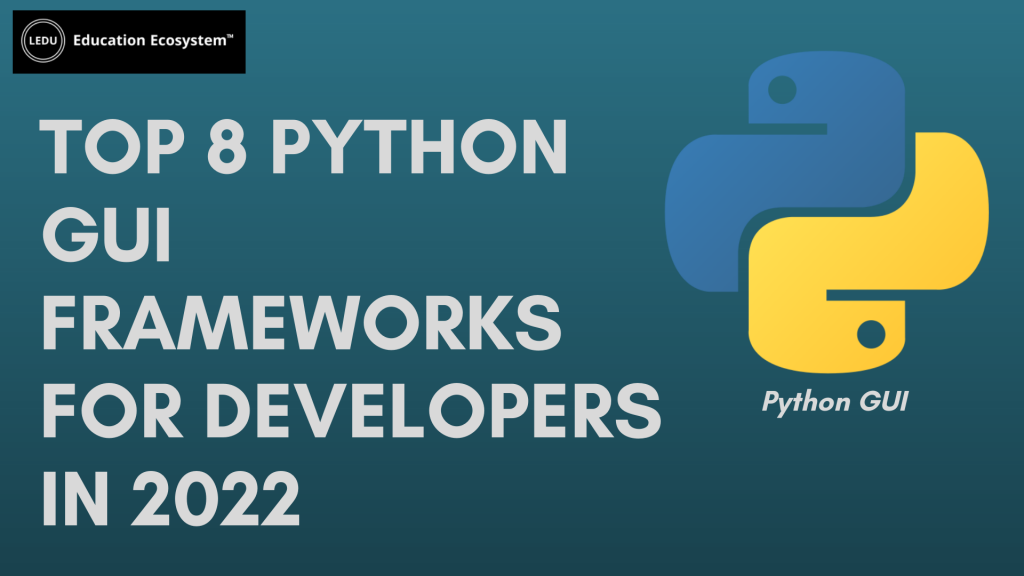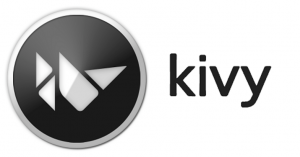
Introduction
Development frameworks are designed to make the life of a developer easier. They make a particular kind of application easier to create, or a particular language easier to work with. A GUI framework for Python makes developing the user interface for your application far easier than trying to code it by hand in Python.
This article will cover the top 8 Python GUI Frameworks for all platforms, including; Windows, Linux and Mac. All these GUI frameworks are easy to use and popular, some of them even being open-source.
What are the top 8 Python GUI frameworks for Developers in 2022?
-
PyQt5
PyQT is one of the favoured cross-platform Python bindings implementing the Qt library for the Qt (owned by Nokia) application development framework.
Currently, PyQT is available for Unix/Linux, Windows, Mac OS X and Sharp Zaurus. It combines the best of Python and Qt and it up to the programmer to decide whether to create a program by coding or using Qt Designer to create visual dialogs.
-
Streamlit
Streamlit is a fantastic tool for developing web apps using Python. You don’t have to know any HTML, CSS, or JavaScript or follow any web development online courses. If you know Python, you are already armed with everything you need.
-
PyGUI
PyGUI is a graphical application cross-platform framework for Unix, Macintosh and Windows. Compared to some other GUI frameworks, PyGUI is by far the simplest and lightweight of them all, as the API is purely in sync with Python.PyGUI inserts very less code between the GUI platform and Python application, hence the display of the application usually displays the natural GUI of the platform.
To make application development even easier for developers, the documentation for the entire library is in Python, eliminating the need to refer to other GUI libraries. PyGUI is available for Python 2 & 3.
-
Kivy
Kivy is an OpenGL ES 2 accelerated framework for the creation of new user interfaces. It supports multiple platforms namely Windows, MacOSX, Linux, Android iOS and Raspberry Pi. It is open source and comes with over 20 widgets in its toolkit.
With Kivy, interface designers can code once and deploy to multiple platforms, while the built-in support for OpenGL ES 2 allows them to use modern and powerful graphics and design techniques.

-
PySide2
PySide2 is Qt for Python, offering the official Python bindings for Qt. This enables the use of Qt APIs in Python apps, and also a binding generator tool (Shiboken2) to expose C++ projects in Python.
-
Tkinter
Tkinter is a cross-platform widget set for creating graphical user interfaces written in Python. The Tkinter module provides a great deal of functionality, including geometry managers, customized widgets, theming support, and Unicode text handling.
It is popular for its simplicity and graphical user interface. It is open source and available under the Python License.
-
Libavg
Libavg is a great Python GUI framework specifically for building touch-based interfaces. It’s built in C++, enabling fast execution times, which are necessary when handling touch-based interfaces.
-
WxPython
wxPython is a cross-platform GUI toolkit you can use to create robust, functional GUIs in a simple and easy manner. The implementation is a set of Python extension modules that wrap the GUI components of the wxWidgets cross-platform library, which is written in C++.
Summary
Due to Python’s increasing popularity, smooth learning curve, and widespread adoption in the real world, it makes for a compelling programming language to pick. Soon after getting a firm grasp on the basics of Python programming, the next challenge beginners face is building the user interface. This article outlines the top 8 python GIU frameworks for developers in 2022.







